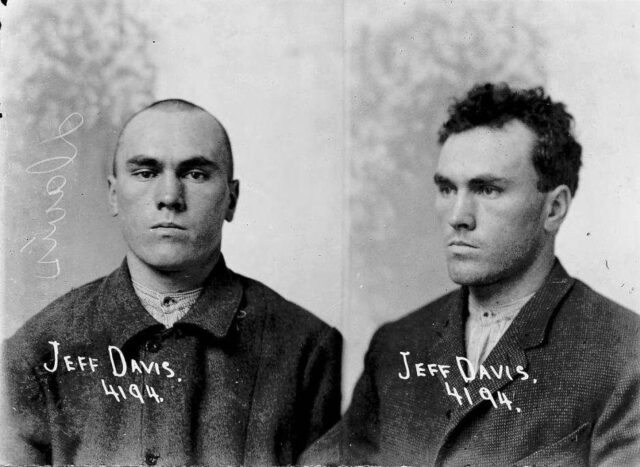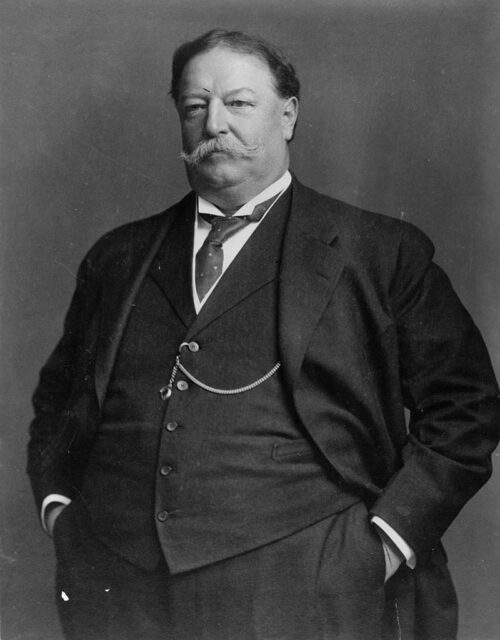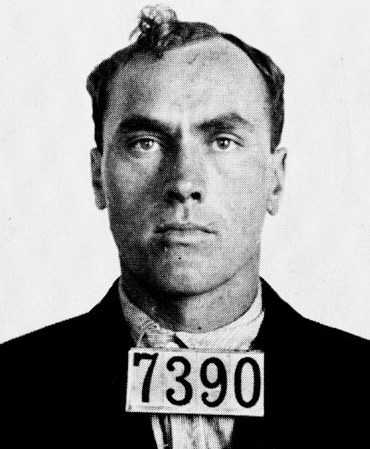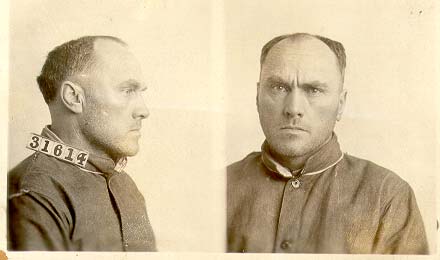Serial killers have long fascinated the public with their seemingly inexplicable motives and heinous crimes. Carl Panzram is one such figure who continues to captivate and terrify people today. Despite being executed nearly a century ago, his legacy lives on as one of the most ruthless killers in American history. Read on to discover the chilling story of Panzram’s crimes and his eventual capture.
Carl Panzram
Charles “Carl” Panzram was born on a Minnesota farm on June 28, 1891. His parents, John and Lizzie, had seven children who they treated very poorly. They were all made to do hard labor on their farm until laws were passed sending children to school. Instead of accepting this, the Panzrams forced their children to work during the night to make up for being away during the day.

He and his siblings were all subject to harsh punishments at the hands of their parents. They were beaten, starved, and even chained up. It didn’t take long for Panzram to become deeply troubled, something that many psychologists point to as the root of his future behavior. At only eight years old, he was charged with being drunk and disorderly and was arrested again at 11 on the same charges. Soon after, he stole food and a gun from one of his neighbors, an act that got him sent to reform school.
From bad to worse
It was while he was at reform school that things only got worse for Panzram. A child who had already experienced more than his share of brutality was subjected to more beatings and torture at the hands of the staff. In retaliation, he secretly burned the building down. He was finally released from the system in 1906, only to turn around and try to kill a Lutheran minister with a gun. Rather than face the consequences, he ran away.

Panzram traveled around on trains, and was further brutalized by others at least once. He continued this lifestyle until 1907, when he drunkenly enlisted in the United States Army. In typical fashion, he continued stealing and was eventually caught. This resulted in a prison stay in the US Disciplinary Barracks at Fort Leavenworth between 1908 and 1910. When he was released, he was also dishonorably discharged from the military and went on to continue with petty theft.
Cross-country violence
In the years to come, Panzram’s criminality and violence only escalated. He worked his way through the country stealing from others, even though he was often caught and put back in prison. Many times he served sentences under other names, as many as 12 different ones. He rarely followed orders while incarcerated, prompting guards to attack him. Sometimes he would serve his time, while in other instances, he would break out.

While Panzram had killed before, it wasn’t until 1920 that he went on a formal murder spree. He was spurred on by the belief that William Taft, who was involved in Panzram’s sentencing at Leavenworth, had caused the downward trajectory of his life. To get revenge, he broke into Taft’s house and stole his gun with the express purpose of killing others. This robbery also provided him with the cash he needed to buy a yacht, Akista.
Carl Panzram went international
Supposedly, he invited sailors onboard so he could brutalize and murder them. This lasted for about a year before he traveled to Africa and then on to other countries, continuing his pattern of killings and torture in each place – including Scotland, South America, and Europe. By 1922, he returned to the US. He spent the next six years in and out of prison, continuing to murder men and commit thievery where he could.

Panzram was a very bad thief, a fact that would be his ultimate downfall. On August 30, 1928, Panzram was arrested yet again for robbery. Unlike many times before, he actually gave his real name, allowing authorities to track his extensive criminal record. He was sent back to Leavenworth, the prison that he hated above all others. While he was there, he made the mistake of discussing the murder of a group of young boys earlier that month.
Finally tried
Police in Boston were able to confirm one of these killings, and Panzram was sentenced to 25 years to life at Leavenworth. While there, he tried to escape once but was beaten so badly that he never tried again. Nonetheless, his erratic behavior earned him a place on the laundry crew so that he wouldn’t be a danger to others. Yet this also placed him working under the infamous Robert Warnke.

Warnke was one of the prison guards best known for his brutal treatment of those working under him. It appears as though he tried the same behavior with Panzram, who warned him what would happen if he continued. When Warnke didn’t stop, Panzram beat him to death with an iron bar. This was the final straw, and he was sentenced to death. Despite receiving many offers for assistance in overturning the ruling, he refused to appeal his sentence.
Inside the mind of a killer
In what became known as the Panzram Papers, the infamous serial killer documented in his own words the crimes he committed throughout his life while he waited for execution. He opened by saying, “In my lifetime I have murdered 21 human beings, I have committed thousands of burglaries, robberies, larcenies, arsons and, last but not least, I have committed sodomy on more than 1,000 male human beings. For all these things I am not in the least bit sorry.”

Panzram went on, “I have no conscience so that does not worry me. I don’t believe in man, God nor devil. I hate the whole damed [sic] human race including myself.” He recounted in detail his life and what led him down his path of crime and brutality. In one entry, he said, “All that I leave behind me is smoke, death, desolation and damnation.”
More from us: David Parker Ray Committed Heinous Acts as the ‘Toy Box’ Killer
Eventually, the time for his execution came on September 5, 1930. Accounts say that he was almost joyful about it. He spat at the executioner, yelling his last words at him: “Hurry up you b*****d, I could kill 10 men while you’re fooling around!”
